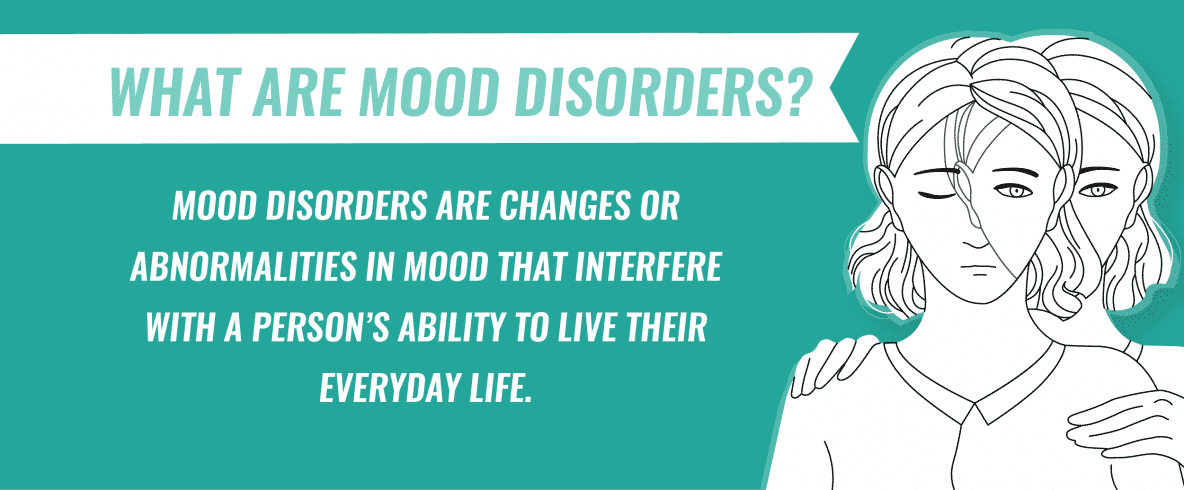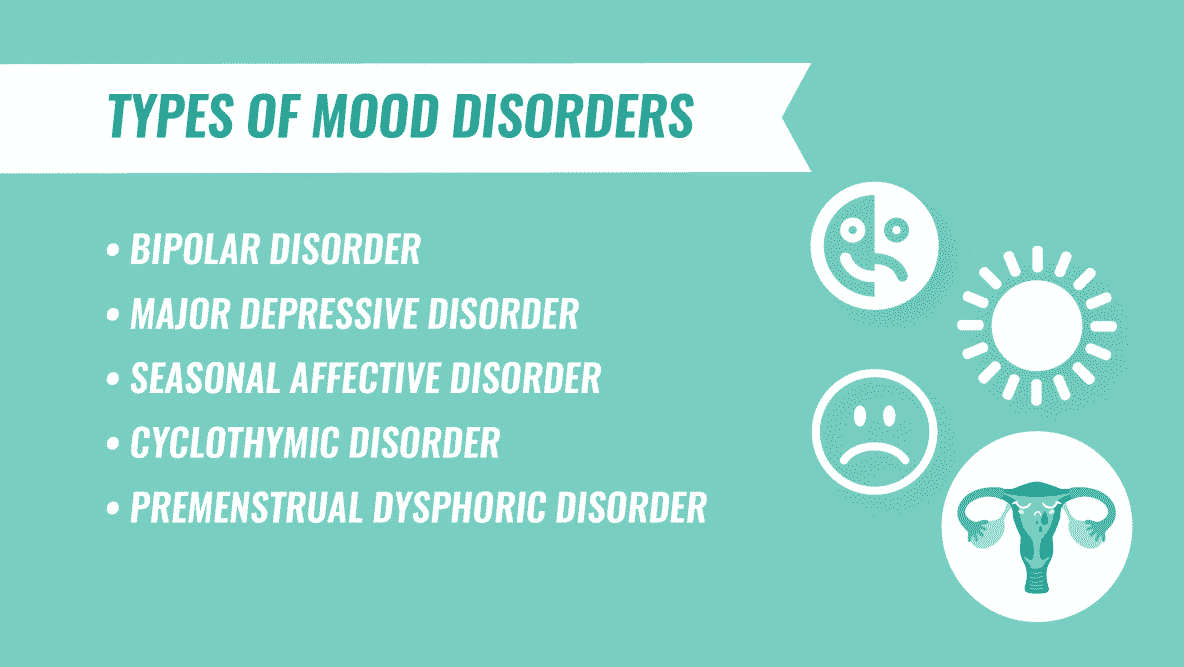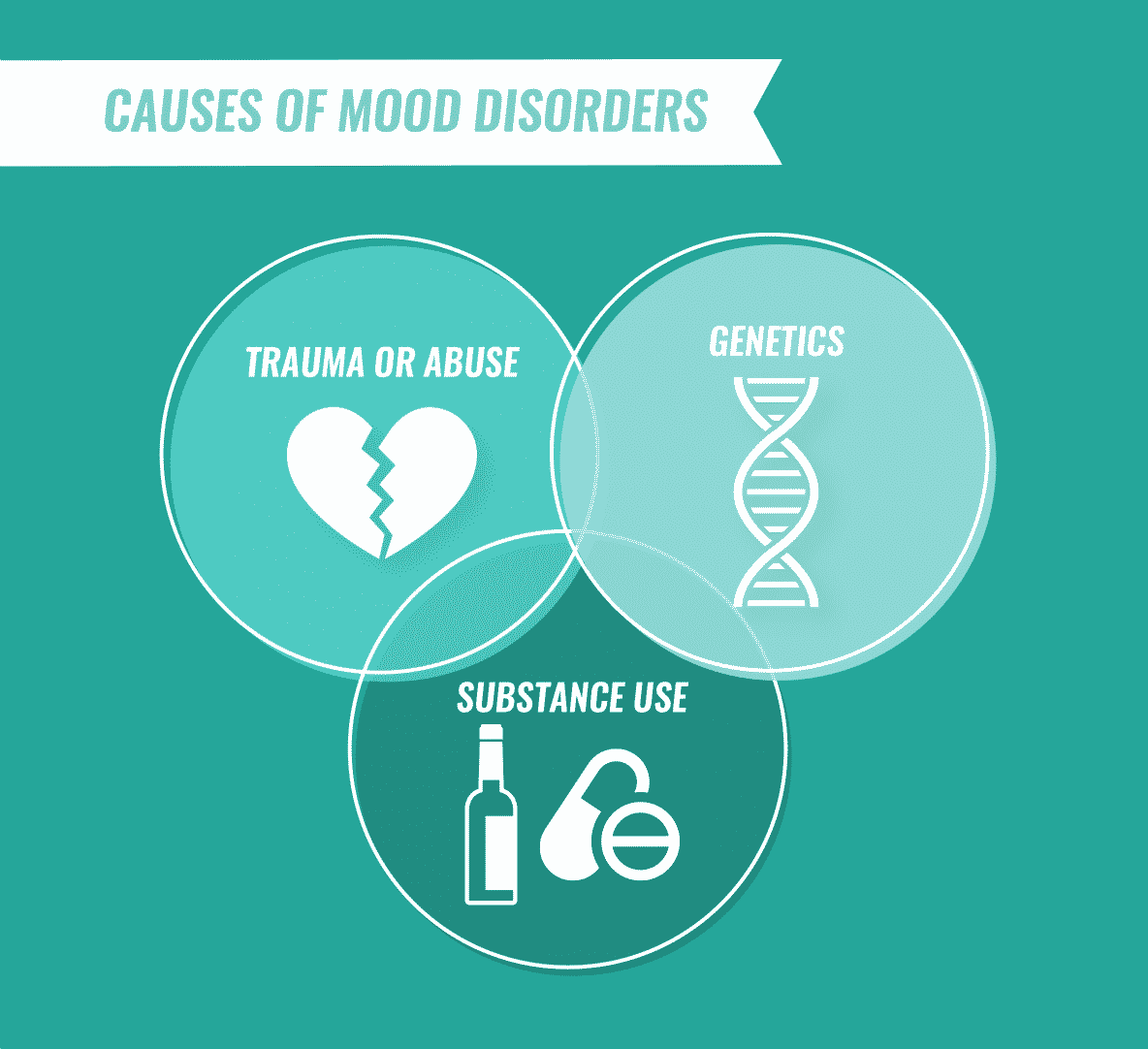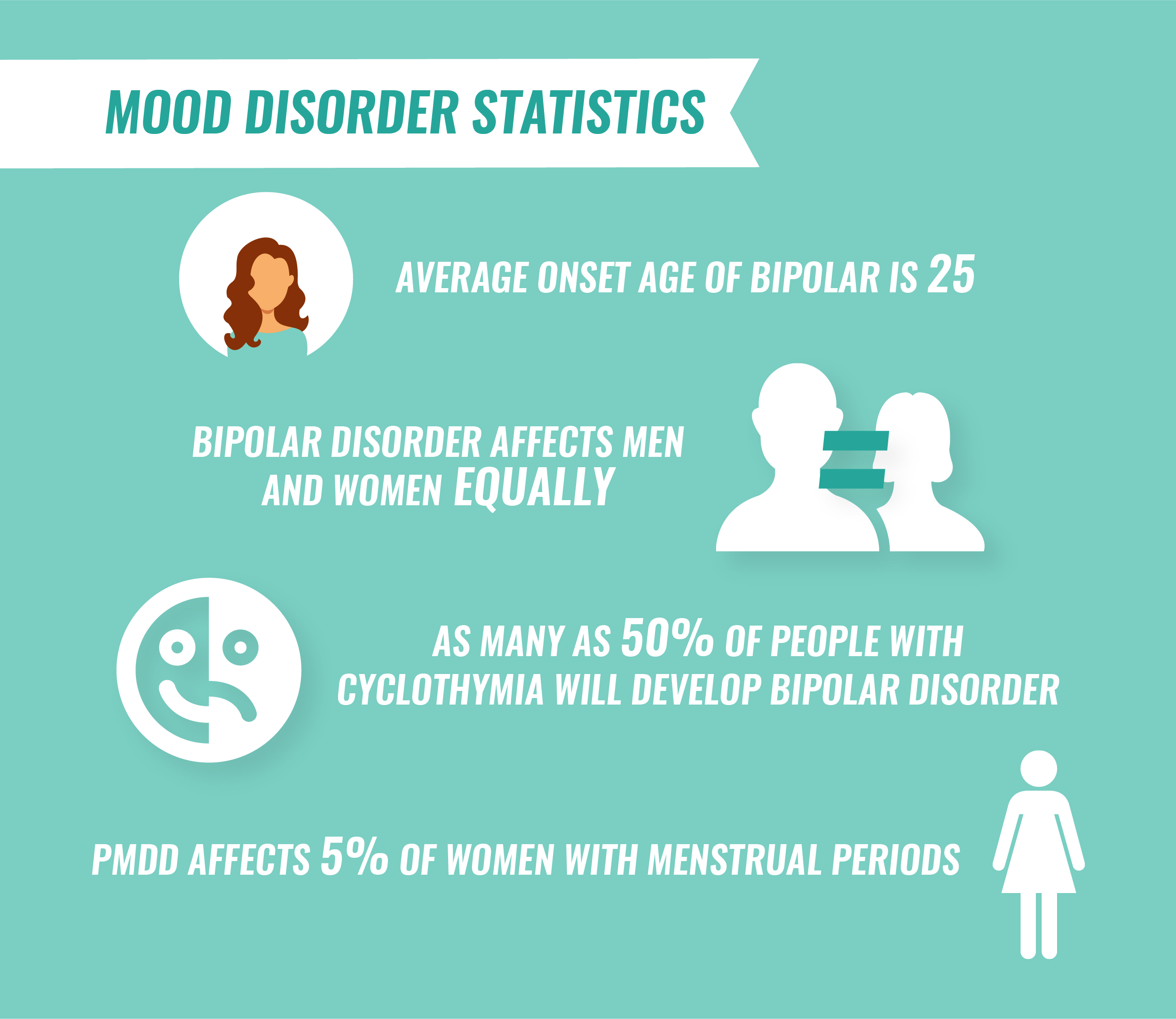From bipolar disorder to seasonal affective disorder, mood disorders affect people in different ways. Learn about the most common types of mood disorders.
Feeling elated one day and sad the next is common. Mood fluctuations are a normal part of life. However, for some people, these changes are severe and impair their ability to live a normal life. These people likely live with a mood disorder.
Different mood disorders affect people in different ways. Understanding the specifics of common disorders is helpful for people with a friend or family member living with a mood disorder.
What are Mood Disorders?
Mood disorders are changes or abnormalities in mood that interfere with a person’s ability to live their everyday life. While it’s common to experience a range of emotions throughout the day, until it interferes with your day-to-day life, it’s unlikely to be a mood disorder.

Types of Mood Disorders
Mood disorders are sometimes called affective disorders and cause elevated moods, depressed moods or a combination of the two. While there are many types of mood disorders, the following are the most common.
[elementor-template id="4848"]Bipolar Disorder
Bipolar disorderis characterized by shifts between extreme high and low moods, more so than the typical range of ups and downs experienced throughout the day. A person with bipolar disorder experiences mania and depression, two opposing emotional states.
Mania refers to periods of elevated mood. While this may sound favorable, mania is often characterized by uncontrollable energy, impulsive or reckless behavior, the inability to sleep and irritability. Hypomania refers to a less intense version of mania.
Depressionis the opposite of mania. A person experiencing a depressive episode may feel sad, lose interest or pleasure in activities, experience changes in energy levels and appetite, or extreme feelings of helplessness. In the most severe cases, a person with bipolar disorder may experiencepsychosiswhich can lead to being misdiagnosed with schizophrenia.
Major Depressive Disorder
While periods of sadness may seem like depression,major depressive disorderencompasses far more than just being sad. Common symptoms of major depressive disorder include:
- Changes in sleep and appetite
- Inability to concentrate
- Fatigue
- Loss of interest in, or pleasure from, activities
- Feeling hopeless
- Feeling guilty without cause or disproportionate to the source
- Slowed movement
- Body aches
- Thoughts of self-harm
Seasonal Affective Disorder
Seasonal affective disorder, also known as seasonal pattern depression, is similar to major depressive disorder in many ways. While the two disorders share symptoms, those with seasonal affective disorder generally only experience these symptoms during the fall and winter.
A person with seasonal affective disorder is likely to sleep excessively, feel tired during the daytime, overeat, lose interest in sex and withdraw from normal activities and socialization.
In most cases, symptoms begin in October or November but may occur as early as August. Some people may not experience symptoms until much further into the season. Typically, relief begins in March or April, but the majority of people do not report feeling they have fully recovered from this period of depression until May.
Cyclothymic Disorder
Cyclothymic disorder is very similar to bipolar disorder andfeatures alternating moodsof hypomania and mild depression. In most regards, cyclothymia is viewed as a less intense form of bipolar disorder. However, the intensity is not the only difference. While a person with bipolar disorder may experience significant time — perhaps years — without symptoms, a person with cyclothymia does not experience more than two months at a time of normal, stable moods.
Premenstrual Dysphoric Disorder
Premenstrual dysphoric disorder(PMDD) is a severe form of premenstrual syndrome (PMS). PMDD symptoms emerge one to two weeks before the start of a woman’s menstrual period and subside a few days after the period starts. A person with PMDD is likely to experience extreme irritability, depressive states, anxiety, panic, rapid mood swings, and binge eating in addition to the physical symptoms commonly associated with PMS.

Causes of Mood Disorders
Several general factors may contribute to the development of a mood disorder. Some causes of mood disorders include:
- Childhood trauma, abuse or neglect
- Genetic predisposition
- Changes in brain chemicals
- Life circumstances (experiencing a divorce, inconsistent care received as a child, etc.)
- Physical conditions such as chronic pain or terminal illness
- Substance use

How are Mood Disorders Diagnosed?
Mood disorder diagnosis generally consists of a doctor or mental health professional assessing symptoms based on self-report. Family history is likely to be reviewed as mood disorders tend to be genetic. Tests are run to rule out physical health conditions that may mimic mood disorders, such as thyroid problems.
Who is at Risk For Mood Disorders?
Because mood disorderstend to be genetic, having family members with any mood disorder increases a person’s likelihood of developing a mood disorder. Other risk factors for mood disorders include experiencing trauma, abuse or neglect, as well as engaging in substance misuse or experiencing a major negative life change.
Statistics on Mood Disorders
Mood disorders are among the most commonly diagnosed mental health conditions. Reviewing mood disorder statistics highlights the prevalence of these disorders.
- The average age of onset for bipolar disorder is 25, but it may occur earlier
- Bipolar disorder affects men and women equally
- Approximately 2.6 percent of the population is diagnosed with bipolar disorder
- Nearly 7 percent of American adults report having experienced a depressive episode related to major depressive disorder in the past year
- One percent or less of the population experiences cyclothymia
- As many as 50 percent of people who experience cyclothymia will later develop a bipolar disorder
- Most women with PMDD also have another primary mental health diagnosis
- PMDD affects 5 percent of women with menstrual periods

Mood Disorders and Substance Abuse
Mood disorders and substance abuseoften co-occur. In many cases, a person self-medicates for a mood disorder by using substances. Substance-induced mood disorders can occur when chronic substance use changes the brain’s structure and chemical composition. If a substance use disorder and a mood disorder are present, it is important that both are treated.
Mood Disorder Treatment
Mood disorder treatmentusually consists of therapy, medication management or a combination of the two. Most mood disorders are very treatable. Some people may need long-term treatment, but for many people, life-long treatment is unnecessary.
Regardless of which mood disorder is present, or its intensity, living with a mood disorder can at times be overwhelming or discouraging. Mood disorders are treatable, and recovery is possible. If you or a loved one live with a substance use disorder co-occurring with a mood disorder,call The Recovery Villageto speak with a representative. The Recovery Village has facilities across the country providing treatment for individuals struggling with substance use and mental health disorders.
